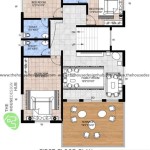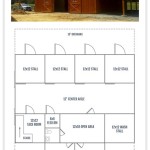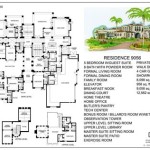How to Make House Plans
Creating house plans is an essential step in the home construction process. They provide a detailed blueprint of your future home, outlining its layout, dimensions, and architectural features. While hiring an architect is the traditional route, many homeowners choose to create their own plans, empowering them to personalize their dream home. This guide delves into the intricacies of making house plans, covering the steps involved, essential considerations, and resources available.
1. Define Your Needs and Goals
Before embarking on the design process, it's crucial to define your needs and goals for your new home. This involves a comprehensive assessment of your lifestyle, family size, and future aspirations. Consider the following aspects:
- Number of bedrooms and bathrooms: Assess the number of rooms required based on your family size and potential future needs.
- Living space: Determine the desired size of your living room, kitchen, dining area, and other common spaces.
- Outdoor space: Evaluate the layout of your yard, including desired features like patios, decks, and gardens.
- Special requirements: Identify any specific needs like accessibility features, home office space, or hobby rooms.
- Budget: Establish a realistic budget range to guide your design choices and material selections.
By carefully analyzing your requirements, you'll have a clear vision of your ideal home, which will guide your design choices throughout the process.
2. Gather Inspiration and Research
Once your needs are defined, it's time to gather inspiration and research different architectural styles and home layouts. Explore online resources, magazines, and home design books to identify designs that resonate with your preferences.
Consider the following during this research phase:
- Architectural styles: Explore various styles like Victorian, Craftsman, Modern, and Contemporary to find one that reflects your aesthetic.
- Floor plans: Analyze different floor plan layouts from open-concept designs to traditional configurations, comparing their suitability to your needs.
- Exterior features: Investigate roof styles, window designs, and exterior finishes to envision your home's overall look.
- Interior details: Research kitchen layouts, bathroom designs, and other interior elements to personalize your space.
This phase will expose you to diverse design options and enable you to refine your vision, making informed choices for your house plans.
3. Utilize Design Software and Tools
Numerous software programs and online tools are available to aid in creating your house plans. These tools provide a visual and interactive platform for experimenting with layouts, adding details, and visualizing your design. Popular options include:
- Floorplanner: A user-friendly online tool for creating basic 2D floor plans.
- SketchUp: A powerful 3D modeling software used by professionals and enthusiasts alike.
- Chief Architect: A comprehensive software program offering advanced features for detailed house plans and 3D renderings.
- Sweet Home 3D: A free and intuitive software program for creating 3D models of your home.
- Home Designer Suite: A user-friendly program designed for homeowners with limited design experience.
Explore these options to find a tool that aligns with your technical skills and design requirements. These tools offer a dynamic environment to experiment, make adjustments, and refine your house plans until they meet your vision.
4. Consider Building Codes and Regulations
Compliance with building codes and regulations is paramount for a safe and structurally sound home. Research local codes and regulations regarding foundation types, roof slopes, electrical wiring, plumbing, and fire safety standards. Consult with a building inspector or architect to ensure your plans adhere to these requirements. Failure to comply with codes can result in delays, expensive modifications, or even the rejection of your plans.
Building codes and regulations are essential for ensuring the safety and sustainability of your home. By prioritizing compliance from the design phase, you can avoid potential setbacks and complications during the construction process.

Floor Plan Creator And Designer Free Easy App

How To Draw A Floor Plan Live Home 3d

Easy To Build Houses And Floor Plans Houseplans Blog Com

Make Your Own Blueprint How To Draw Floor Plans

Make Your Own Blueprint How To Draw Floor Plans Drawing House Sketch Plan

House Plans How To Design Your Home Plan

Blender For Noobs 10 How To Create A Simple Floorplan In

How To Make A House Plan Edrawmax

Small House Design 2024001 Pinoy Eplans Floor Plans

Create Floor Plan








